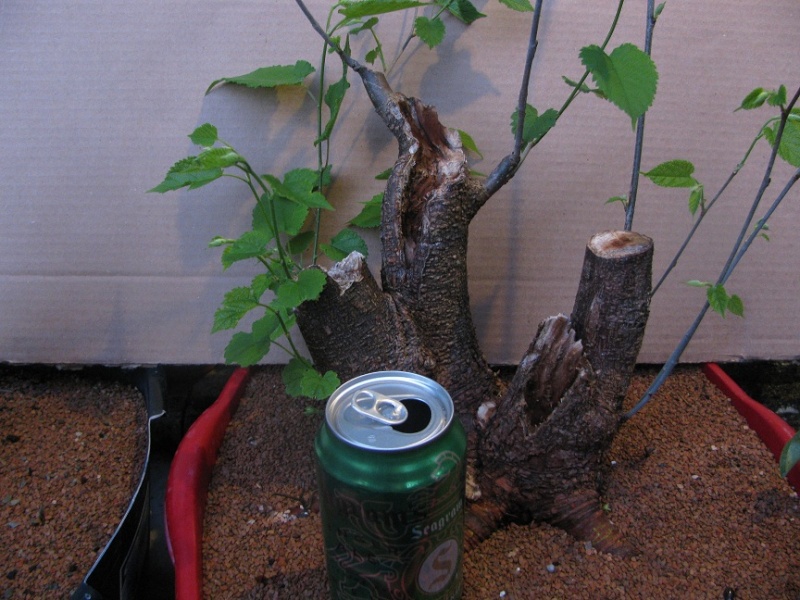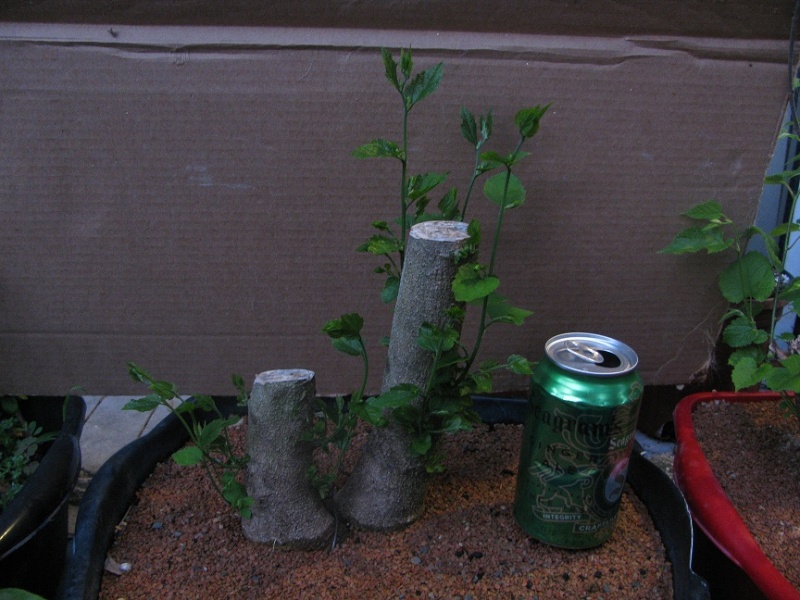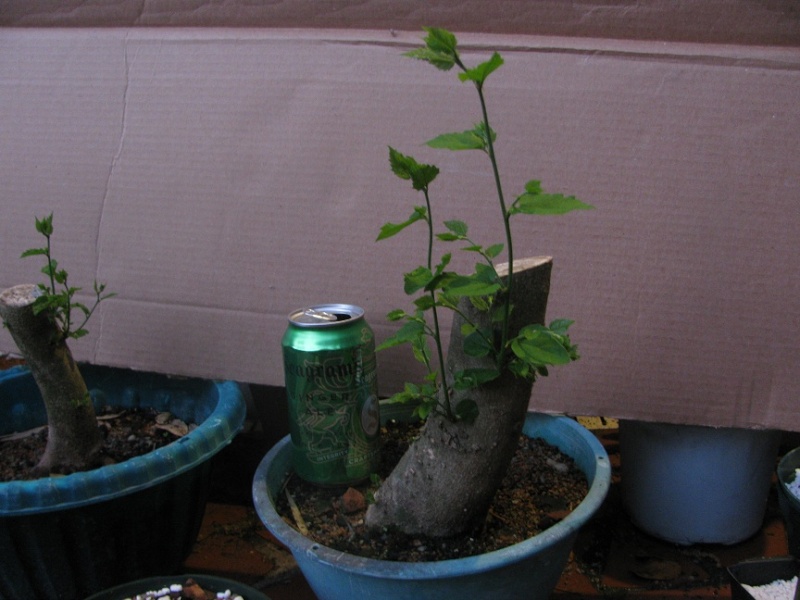Fertilizer for inorganic soil?
+7
-keith-
MrFancyPlants
Khaimraj Seepersad
bonsaisr
0soyoung
drgonzo
PeacefulAres
11 posters
Page 1 of 2
Page 1 of 2 • 1, 2 
 Fertilizer for inorganic soil?
Fertilizer for inorganic soil?
I recently managed to pick up a 50lb bag of turface, and I plan to experiment with it on some trees. I understand that with inorganic soils, you can't quite use regular fertilizer, because there needs to be a certain amount of organic processing by bacteria and such, to actually provide the plant with nutrients. So with that in mind, does anybody have a suggestion for a good fertilizer to use with inorganic soils?
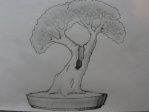
PeacefulAres- Member
 Re: Fertilizer for inorganic soil?
Re: Fertilizer for inorganic soil?
With inexpensive fertilizers such as Miracle Grow the bulk of the Nitrogen content of the fertilizer is often in the form of Urea which will need to be metabolized by soil microorganisms in order to be converted into a form the plant can absorb, inorganic soils can take a while to build up sufficient numbers of these organisms in order to allow the fertilizer to be absorbed efficiently. Even when sufficient numbers have developed in the soil the metabolic action of these organisms can be highly variable (i.e temperature).
I Use dyna-gro fertilizers as do many others including Jack Sustic, the curator of the National Bonsai & Penjing Museum who uses Dyna grow 7-9-5 for all the trees in the collection. I have found them to be excellent fertilizers for use with in-organics as they require no soil microbial action in order to deliver their nutriment to the tree. All micros are also fully chelated. They also contain ALL necessary micros for plant life, including Ca, and Mg, a claim Miracle grow cannot make.
You can certainly use products like Miracle Grow if you wish. It has however been my experience that my trees in pure Turface respond better and are healthier using Dyna-grow after having originally started out several years ago using M.G. and being disappointed.
On Dyna-gros website you'll find a competitive analysis that shows the difference between it and other brands (Peters, Shultz, Miracle Grow etc...) its quite illuminating.
-Jay
I Use dyna-gro fertilizers as do many others including Jack Sustic, the curator of the National Bonsai & Penjing Museum who uses Dyna grow 7-9-5 for all the trees in the collection. I have found them to be excellent fertilizers for use with in-organics as they require no soil microbial action in order to deliver their nutriment to the tree. All micros are also fully chelated. They also contain ALL necessary micros for plant life, including Ca, and Mg, a claim Miracle grow cannot make.
You can certainly use products like Miracle Grow if you wish. It has however been my experience that my trees in pure Turface respond better and are healthier using Dyna-grow after having originally started out several years ago using M.G. and being disappointed.
On Dyna-gros website you'll find a competitive analysis that shows the difference between it and other brands (Peters, Shultz, Miracle Grow etc...) its quite illuminating.
-Jay
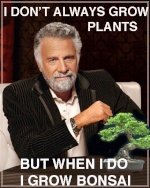
drgonzo- Member
 Re: Fertilizer for inorganic soil?
Re: Fertilizer for inorganic soil?
Osmacote (14-14-14 with trace minerals) works just fine with Turface MVP.
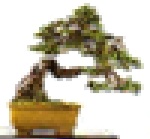
0soyoung- Member
 Re: Fertilizer for inorganic soil?
Re: Fertilizer for inorganic soil?
drgonzo wrote:With inexpensive fertilizers such as Miracle Grow the bulk of the Nitrogen content of the fertilizer is often in the form of Urea which will need to be metabolized by soil microorganisms in order to be converted into a form the plant can absorb, inorganic soils can take a while to build up sufficient numbers of these organisms in order to allow the fertilizer to be absorbed efficiently. Even when sufficient numbers have developed in the soil the metabolic action of these organisms can be highly variable (i.e temperature).
I Use dyna-gro fertilizers as do many others including Jack Sustic, the curator of the National Bonsai & Penjing Museum who uses Dyna grow 7-9-5 for all the trees in the collection. I have found them to be excellent fertilizers for use with in-organics as they require no soil microbial action in order to deliver their nutriment to the tree. All micros are also fully chelated. They also contain ALL necessary micros for plant life, including Ca, and Mg, a claim Miracle grow cannot make.
You can certainly use products like Miracle Grow if you wish. It has however been my experience that my trees in pure Turface respond better and are healthier using Dyna-grow after having originally started out several years ago using M.G. and being disappointed.
On Dyna-gros website you'll find a competitive analysis that shows the difference between it and other brands (Peters, Shultz, Miracle Grow etc...) its quite illuminating.
-Jay
Would it be possible to speed up the process of colonization by microorganisms? For instance, could you top the soil with some compost or something like that?

PeacefulAres- Member
 Inorganic Soil
Inorganic Soil
That would defeat the purpose of the free draining soil. If you would like to introduce some organic matter, use chopped bark.
Iris
Iris

bonsaisr- Member
 Re: Fertilizer for inorganic soil?
Re: Fertilizer for inorganic soil?
PeacefulAres,
If you simply mix some compost with the inorganic, you would get what you want and could use Jay's or Osoyoung;s idea,
or just look up hydroponics and maybe try that.
If it is an experiment, I would like to think these trees are just rooted cuttings and not something you wouldn't want to lose?
Later.
Khaimraj
* Would the chopped bark need to use some of the N part to decay?
If you simply mix some compost with the inorganic, you would get what you want and could use Jay's or Osoyoung;s idea,
or just look up hydroponics and maybe try that.
If it is an experiment, I would like to think these trees are just rooted cuttings and not something you wouldn't want to lose?
Later.
Khaimraj
* Would the chopped bark need to use some of the N part to decay?

Khaimraj Seepersad- Member
 Re: Fertilizer for inorganic soil?
Re: Fertilizer for inorganic soil?
I have had luck including some chunks of dried vermi-compost in my mostly inorganic mix. I think I shall call it wormydama. It actually sticks together for at least a couple years in between repottings, although they do get smaller and smaller over time.

MrFancyPlants- Member
 Re: Fertilizer for inorganic soil?
Re: Fertilizer for inorganic soil?
All micros are also fully chelated.
thanks ive been wondering what chelated meant ...thats a good one to remember

-keith-- Member
 Re: Fertilizer for inorganic soil?
Re: Fertilizer for inorganic soil?
-keith- wrote:All micros are also fully chelated.
thanks ive been wondering what chelated meant ...thats a good one to remember
Chelation (with a hard K) is a process in which molecular groups known as ligands are bonded chemically around a central atom. What this serves to do, among other functions, is aid in keeping the atom dissolved in solution rather than precipitating out. While in solution the atom, lets say its Iron, remains available for the plant to absorb.
-Jay

drgonzo- Member
 Re: Fertilizer for inorganic soil?
Re: Fertilizer for inorganic soil?
bonsaisr wrote:That would defeat the purpose of the free draining soil. If you would like to introduce some organic matter, use chopped bark.
Iris
Well, my thought was that adding the compost to the top of the soil would allow the microorganism to move into the turface more quickly. Then, after a period of time, you could just remove that later of compost. Sure, some of that organic matter would drift into the soil, but you could probably remove most of it.

PeacefulAres- Member
 Re: Fertilizer for inorganic soil?
Re: Fertilizer for inorganic soil?
Isn't that exactly what we do with an organic fertilizer used with an inorganic soil mix? We add some organic compost that contains some fertilizer (generally less than 10% of the total weight and often less than 5%). The organic materials sit on the surface and slowly work their way into the inorganic soil mix as we water.
I have found that bark in the soil mix tends to lead to root rot. Of course I was using 1/4 to 1/3 bark which may be too much. I cut back on the bark until all of my new soil mix is 100% inorganic (the recycled mix contains some residual bark after screening). With a mix of standard chemical fertilizers I found that the growth was not that good. So I started adding in some liquid organic (Alaska Fish Fertilizer was reasonably priced here in the US) and that helped.
The past couple of years I have been buying organic lawn fertilizer (Dr. Earth brand - available for a decent price in 18 kg bags), mixing it with some other organics and gypsum salts for Mg, and putting scoops (over-full tablespoons) on the surface and using the same chemical fertilizers about every 2 weeks. The growth was much stronger, although I still have some refinement to do with some trees (Scots pines are still a bit yellow). I made up poo balls (wet it and form balls), but it was a bunch of work and did not work as well since they tended to sit on the surface and not break down in my sometimes dry climate.
I guess my finding is that a mix of organic and inorganic fertilizer seems to work fairly well with an inorganic soil mix. I am busy and have a lot of trees in training so I find the lower cost bulk materials and just scoop them on. I may try to the Dyna-gro on some of the problem trees to see if that helps.
I have found that bark in the soil mix tends to lead to root rot. Of course I was using 1/4 to 1/3 bark which may be too much. I cut back on the bark until all of my new soil mix is 100% inorganic (the recycled mix contains some residual bark after screening). With a mix of standard chemical fertilizers I found that the growth was not that good. So I started adding in some liquid organic (Alaska Fish Fertilizer was reasonably priced here in the US) and that helped.
The past couple of years I have been buying organic lawn fertilizer (Dr. Earth brand - available for a decent price in 18 kg bags), mixing it with some other organics and gypsum salts for Mg, and putting scoops (over-full tablespoons) on the surface and using the same chemical fertilizers about every 2 weeks. The growth was much stronger, although I still have some refinement to do with some trees (Scots pines are still a bit yellow). I made up poo balls (wet it and form balls), but it was a bunch of work and did not work as well since they tended to sit on the surface and not break down in my sometimes dry climate.
I guess my finding is that a mix of organic and inorganic fertilizer seems to work fairly well with an inorganic soil mix. I am busy and have a lot of trees in training so I find the lower cost bulk materials and just scoop them on. I may try to the Dyna-gro on some of the problem trees to see if that helps.
Marty Weiser- Member
 Re: Fertilizer for inorganic soil?
Re: Fertilizer for inorganic soil?
You know the way the older books describe it, the Japanese, used a very hard form of akadama, that over long time when used as a soil [ say 30 years ] would decay back into a clay type material.
I have somewhat duplicated that hard akadama with a local material that is also porous and hard. Additionally I have added on crushed porous red earthenware brick.
You can plant a tree in this akadama type material and after a month start to feed on organic material [ ever realise that fermented bean meal is just compost ?] ,a blended compost.
In fact I also just rest the leaves and fine branches on the soil's surface and it decays in, as it would in nature.[ leaf mould ?]
What I have also noticed is if I add compost to an inorganic mix, when repotting, since I sift the old soil for continued use, the compost will have formed balls/pills at the same size as the inorganic particles.
I just refresh the soil with what I believe is needed.
However, from what a friend in zone 7 told me, the bark stuff just turns to mush, and if it following the rules of decay, will also eat nitrogen in order to decay. So instead of your tree getting the nitrogen, it goes to the bark and I believe [ stand to be corrected ] upon decaying, the mush will then dump large amounts of nitrogen back into the soil.
Not sure how a tree's roots handles that? [ most decay in a forest is surface - leaf mould - a valuable cycle.]
Hopefully some of you guys will test the compost idea in your climate for a few years on rooted cuttings.
Oh by the way the loam that keeps getting mentioned in the older books is supposed to be about,
40 % fine sand [ under 2mm]
40 % rotten rock [ I saw something about feldspars ]
and 20% clays.
To this is being added , a % more of larger particled sand and compost.
I guess the most important factor is still ---- freely draining.
I figure the high resistance to compost [ decayed bean meal or other ] is some form of convenience.
Later.
Khaimraj
I have somewhat duplicated that hard akadama with a local material that is also porous and hard. Additionally I have added on crushed porous red earthenware brick.
You can plant a tree in this akadama type material and after a month start to feed on organic material [ ever realise that fermented bean meal is just compost ?] ,a blended compost.
In fact I also just rest the leaves and fine branches on the soil's surface and it decays in, as it would in nature.[ leaf mould ?]
What I have also noticed is if I add compost to an inorganic mix, when repotting, since I sift the old soil for continued use, the compost will have formed balls/pills at the same size as the inorganic particles.
I just refresh the soil with what I believe is needed.
However, from what a friend in zone 7 told me, the bark stuff just turns to mush, and if it following the rules of decay, will also eat nitrogen in order to decay. So instead of your tree getting the nitrogen, it goes to the bark and I believe [ stand to be corrected ] upon decaying, the mush will then dump large amounts of nitrogen back into the soil.
Not sure how a tree's roots handles that? [ most decay in a forest is surface - leaf mould - a valuable cycle.]
Hopefully some of you guys will test the compost idea in your climate for a few years on rooted cuttings.
Oh by the way the loam that keeps getting mentioned in the older books is supposed to be about,
40 % fine sand [ under 2mm]
40 % rotten rock [ I saw something about feldspars ]
and 20% clays.
To this is being added , a % more of larger particled sand and compost.
I guess the most important factor is still ---- freely draining.
I figure the high resistance to compost [ decayed bean meal or other ] is some form of convenience.
Later.
Khaimraj

Khaimraj Seepersad- Member
 Re: Fertilizer for inorganic soil?
Re: Fertilizer for inorganic soil?
Add on,
is it that folk have tried to take the practice of Indoor Growing [ inorganic plus chipped bark ,etc ] into the Outdoor Growing.
Indoor growing is just hydroponics, needs to be very hygenic as the growing practice goes.
Outdoors, has beneficial bacteria, sunlight, wind, beneficial insects and so on. Evolution positives.
I hope this is not one of those borrowed information bits that over time just got smeared onto everything?
Later.
Khaimraj
is it that folk have tried to take the practice of Indoor Growing [ inorganic plus chipped bark ,etc ] into the Outdoor Growing.
Indoor growing is just hydroponics, needs to be very hygenic as the growing practice goes.
Outdoors, has beneficial bacteria, sunlight, wind, beneficial insects and so on. Evolution positives.
I hope this is not one of those borrowed information bits that over time just got smeared onto everything?
Later.
Khaimraj

Khaimraj Seepersad- Member
 Re: Fertilizer for inorganic soil?
Re: Fertilizer for inorganic soil?
I've been experimenting with lots of different soils. Being in south Florida, I've had success with heavily organic soils, providing they also drain well. On the other hand, I'm working with mostly native species which enjoy having their feet wet, and don't mind very fine soil. I have a few questions though.
What's the deal with particle size? I get that there are some basic rules; you don't want it to be so fine that it doesn't drain or suffocates the root system, and you don't want it to be so large that the plant doesn't grow the proper feeder roots. But after that is there any particularly advantages size?
Why are inorganic soils superior? The disadvantages to organic soil components seem to be that they retain too much moisture(only a problem if that is bad for the plant in question) and that over time, the decay and reduce the capacity of the soil to drain effectively. But if you're repotting once a year, how badly can that effect the soil?
What's the deal with particle size? I get that there are some basic rules; you don't want it to be so fine that it doesn't drain or suffocates the root system, and you don't want it to be so large that the plant doesn't grow the proper feeder roots. But after that is there any particularly advantages size?
Why are inorganic soils superior? The disadvantages to organic soil components seem to be that they retain too much moisture(only a problem if that is bad for the plant in question) and that over time, the decay and reduce the capacity of the soil to drain effectively. But if you're repotting once a year, how badly can that effect the soil?

PeacefulAres- Member
 Re: Fertilizer for inorganic soil?
Re: Fertilizer for inorganic soil?
Well PeacefulAres,
that might be your answer, you repot yearly, and perhaps your soil can't go to the clumped,airless state ?
Listen if you use a totally inorganic soil, and you simply put the decayed beanmeal or other organic on top of the soil's level to decay, it will function as a slow acting fertilizer. Plus if you have boosted the compost with bone meal, potassium bearing material, and micro nutrient material [ in the old books, it was a blend of weeds ], you have a complete fertilizer.
If you are maintaining a design, the above would be fine and still allow for slowed growth.
For growing, you might want to boost the response, with extra material, be it manure tea or inorganic fertilizer.
As long as the tree or shrub is healthy, you need look no further.
With most of my trees and shrubs, yearly repotting with certain sizes of pot, is needed. I have noted that pines are slower, as is Sageretia to need to be repotted.
Only change what you are doing, if your plant is not healthy, or not growing at a normal rate [ healthy again.]
Once again, freely draining.
Aside, I wonder if one simply added tothose absorbent bubbles [ the novelty clear coloured balls for plants ] a mild fertilizer solution, hydrated the bubble and mixed some into an inorganic mix ?
Would that work as a slow feeder for bonsai --------- hmm----- an idea to test.
Later.
Khaimraj
that might be your answer, you repot yearly, and perhaps your soil can't go to the clumped,airless state ?
Listen if you use a totally inorganic soil, and you simply put the decayed beanmeal or other organic on top of the soil's level to decay, it will function as a slow acting fertilizer. Plus if you have boosted the compost with bone meal, potassium bearing material, and micro nutrient material [ in the old books, it was a blend of weeds ], you have a complete fertilizer.
If you are maintaining a design, the above would be fine and still allow for slowed growth.
For growing, you might want to boost the response, with extra material, be it manure tea or inorganic fertilizer.
As long as the tree or shrub is healthy, you need look no further.
With most of my trees and shrubs, yearly repotting with certain sizes of pot, is needed. I have noted that pines are slower, as is Sageretia to need to be repotted.
Only change what you are doing, if your plant is not healthy, or not growing at a normal rate [ healthy again.]
Once again, freely draining.
Aside, I wonder if one simply added tothose absorbent bubbles [ the novelty clear coloured balls for plants ] a mild fertilizer solution, hydrated the bubble and mixed some into an inorganic mix ?
Would that work as a slow feeder for bonsai --------- hmm----- an idea to test.
Later.
Khaimraj

Khaimraj Seepersad- Member
 Re: Fertilizer for inorganic soil?
Re: Fertilizer for inorganic soil?
I still water with a simple 2 gallon watering can and by observation.
Khaimraj
Khaimraj

Khaimraj Seepersad- Member
 Re: Fertilizer for inorganic soil?
Re: Fertilizer for inorganic soil?
drgonzo wrote:With inexpensive fertilizers such as Miracle Grow the bulk of the Nitrogen content of the fertilizer is often in the form of Urea which will need to be metabolized by soil microorganisms in order to be converted into a form the plant can absorb, inorganic soils can take a while to build up sufficient numbers of these organisms in order to allow the fertilizer to be absorbed efficiently. Even when sufficient numbers have developed in the soil the metabolic action of these organisms can be highly variable (i.e temperature).
I Use dyna-gro fertilizers as do many others including Jack Sustic, the curator of the National Bonsai & Penjing Museum who uses Dyna grow 7-9-5 for all the trees in the collection. I have found them to be excellent fertilizers for use with in-organics as they require no soil microbial action in order to deliver their nutriment to the tree. All micros are also fully chelated. They also contain ALL necessary micros for plant life, including Ca, and Mg, a claim Miracle grow cannot make.
You can certainly use products like Miracle Grow if you wish. It has however been my experience that my trees in pure Turface respond better and are healthier using Dyna-grow after having originally started out several years ago using M.G. and being disappointed.
On Dyna-gros website you'll find a competitive analysis that shows the difference between it and other brands (Peters, Shultz, Miracle Grow etc...) its quite illuminating.
-Jay
So I just got a 32oz bottle of the Dyna-gro 7-9-5 in the mail. I checked the instruction on the bottle and the website, and they seem kind of vague. They give suggestions for outdoor, indoor, hydroponics and such. But not specific to growing in the sort of situation that we do as bonsai. Also, there are different instructions for feeding with every watering(which sounds dangerous with a potted plant) and feeding monthly.
I'm curious as to how and when you feed your trees with dyna-gro.

PeacefulAres- Member
 Re: Fertilizer for inorganic soil?
Re: Fertilizer for inorganic soil?
usually 1/2 tsp (teaspoon) per gallon once weekly. Sometimes less then that for species that I have found to be highly salt intolerant such as Beech and Japanese maples.
-Jay
-Jay

drgonzo- Member
 Re: Fertilizer for inorganic soil?
Re: Fertilizer for inorganic soil?
drgonzo wrote:usually 1/2 tsp (teaspoon) per gallon once weekly. Sometimes less then that for species that I have found to be highly salt intolerant such as Beech and Japanese maples.
-Jay
Thanks. I'll give that a shot. Being in florida, I'm sure if I'll need to feed differently, but I guess that's one of the kinks that needs to be ironed out.

PeacefulAres- Member
 Re: Fertilizer for inorganic soil?
Re: Fertilizer for inorganic soil?
PeacefulAres wrote:drgonzo wrote:usually 1/2 tsp (teaspoon) per gallon once weekly. Sometimes less then that for species that I have found to be highly salt intolerant such as Beech and Japanese maples.
-Jay
Thanks. I'll give that a shot. Being in florida, I'm sure if I'll need to feed differently, but I guess that's one of the kinks that needs to be ironed out.
I have found my tropicals enjoy a bit more, say a good tsp per gallon every week, the lesser dosage I use for the deciduous trees once they start to slow down in mid summer (right when the tropicals start going bananas).....
-Jay

drgonzo- Member
 Re: Fertilizer for inorganic soil?
Re: Fertilizer for inorganic soil?
drgonzo wrote:PeacefulAres wrote:drgonzo wrote:usually 1/2 tsp (teaspoon) per gallon once weekly. Sometimes less then that for species that I have found to be highly salt intolerant such as Beech and Japanese maples.
-Jay
Thanks. I'll give that a shot. Being in florida, I'm sure if I'll need to feed differently, but I guess that's one of the kinks that needs to be ironed out.
I have found my tropicals enjoy a bit more, say a good tsp per gallon every week, the lesser dosage I use for the deciduous trees once they start to slow down in mid summer (right when the tropicals start going bananas).....
-Jay
You have something other than summer? My trees didn't even drop their leaves this year lol
Thanks for the suggestions, I gave my trees a 1/2 tsp per gallon mixture. If they respond really well over the next few weeks, maybe I'll increase in the future.

PeacefulAres- Member
 Re: Fertilizer for inorganic soil?
Re: Fertilizer for inorganic soil?
hello, in france we use only turface , pomice, or akadama, kiryu with pomice for pinus , chimical and organic fertilizers together , and, it's very important, humics acids .
Humics acids are not a fertilizer but with humics acids, trees absorb more fertilizer, humics acids occur naturally in nature and result from the decomposition of humus.humics acids in april and june , by foliar spray and soil watering .
The best is BACCHUMUS .
Humics acids are not a fertilizer but with humics acids, trees absorb more fertilizer, humics acids occur naturally in nature and result from the decomposition of humus.humics acids in april and june , by foliar spray and soil watering .
The best is BACCHUMUS .
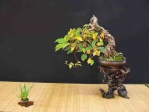
abcd- Member
 Re: Fertilizer for inorganic soil?
Re: Fertilizer for inorganic soil?
abcd wrote:hello, in france we use only turface , pomice, or akadama, kiryu with pomice for pinus , chimical and organic fertilizers together , and, it's very important, humics acids .
Humics acids are not a fertilizer but with humics acids, trees absorb more fertilizer, humics acids occur naturally in nature and result from the decomposition of humus.humics acids in april and june , by foliar spray and soil watering .
The best is BACCHUMUS .
Bachumus ecohemp? is an organic fertilizer...based on 100% vegetable and organic material, fermented with bacteria and enzymes.
There are many others that work the same way or promote roots to grow vigourously, and thus helping the tree getting more water/nutrients. In belgium/holland/england there is this wonderproduct called Rhizotonic (from Canna)...
Or you could also add mycorrhizae as a natural helping hand, actually thats equally good even better since your tree will benefit from this beneficial symbioses. You get all the benefits like a second root system, improving your tree's immune system (better withstand droughts etc).
Offcourse you need to seek out what type of mycorrhizae you add, or not.
About fertilizer: i use both chemical and organic, and i added mycorrhiaze, and i'm on 95% inorganics
Guest- Guest
 Re: Fertilizer for inorganic soil?
Re: Fertilizer for inorganic soil?
Sorry, i speak about bacchumus , that's not a fertilizer , but a natural humic acid .
Bachumus ecohemp is not the same product.
The humic acids used in the preparation of the media samples from
operated at the Al horizon (8-10 cm below the first litter)
of soil in a forest south of Lille (Phalempin - vegetation of oaks and
boul'eaux mainly). The mull humus type and the rock is
42 French Association for the Study of Sol - www.afes.fr - 2010
HUMIC ACIDS AND ACTIVITY OF BACTERIA HETEROTROPHIC
ypreslenne clay. After a stay of several days at room temperature,
samples were dried, crushed, 'and sieved. Non humified organic matter
is removed by density separation with the mixture of alcohol and bromoform. The extraction
humic substances is carried out under nitrogen with a solution of pyrophosphate
0.1 M sodium humic acid obtained by acidification to pH 1.0 with
the solution recovered after centrifugation at 12,000 g, were purified by ultracentrifugation
(100000 g), dialysis (cutoff: 10 001 PM, and treatment of resin
Amberlite IR 120 (H + form). After neutralization with sodium hydroxide, are Iyophii'isés.
Bachumus ecohemp is not the same product.
The humic acids used in the preparation of the media samples from
operated at the Al horizon (8-10 cm below the first litter)
of soil in a forest south of Lille (Phalempin - vegetation of oaks and
boul'eaux mainly). The mull humus type and the rock is
42 French Association for the Study of Sol - www.afes.fr - 2010
HUMIC ACIDS AND ACTIVITY OF BACTERIA HETEROTROPHIC
ypreslenne clay. After a stay of several days at room temperature,
samples were dried, crushed, 'and sieved. Non humified organic matter
is removed by density separation with the mixture of alcohol and bromoform. The extraction
humic substances is carried out under nitrogen with a solution of pyrophosphate
0.1 M sodium humic acid obtained by acidification to pH 1.0 with
the solution recovered after centrifugation at 12,000 g, were purified by ultracentrifugation
(100000 g), dialysis (cutoff: 10 001 PM, and treatment of resin
Amberlite IR 120 (H + form). After neutralization with sodium hydroxide, are Iyophii'isés.

abcd- Member
Page 1 of 2 • 1, 2 
 Similar topics
Similar topics» using rooting/growth hormone together with other organic/inorganic fertilizer
» Has anyone used Growstone as their inorganic soil medium?
» How do we acidify inorganic Bonsai soil?
» removal of old soil and replacement with inorganic substrate
» What fertilizer should I use?
» Has anyone used Growstone as their inorganic soil medium?
» How do we acidify inorganic Bonsai soil?
» removal of old soil and replacement with inorganic substrate
» What fertilizer should I use?
Page 1 of 2
Permissions in this forum:
You cannot reply to topics in this forum







